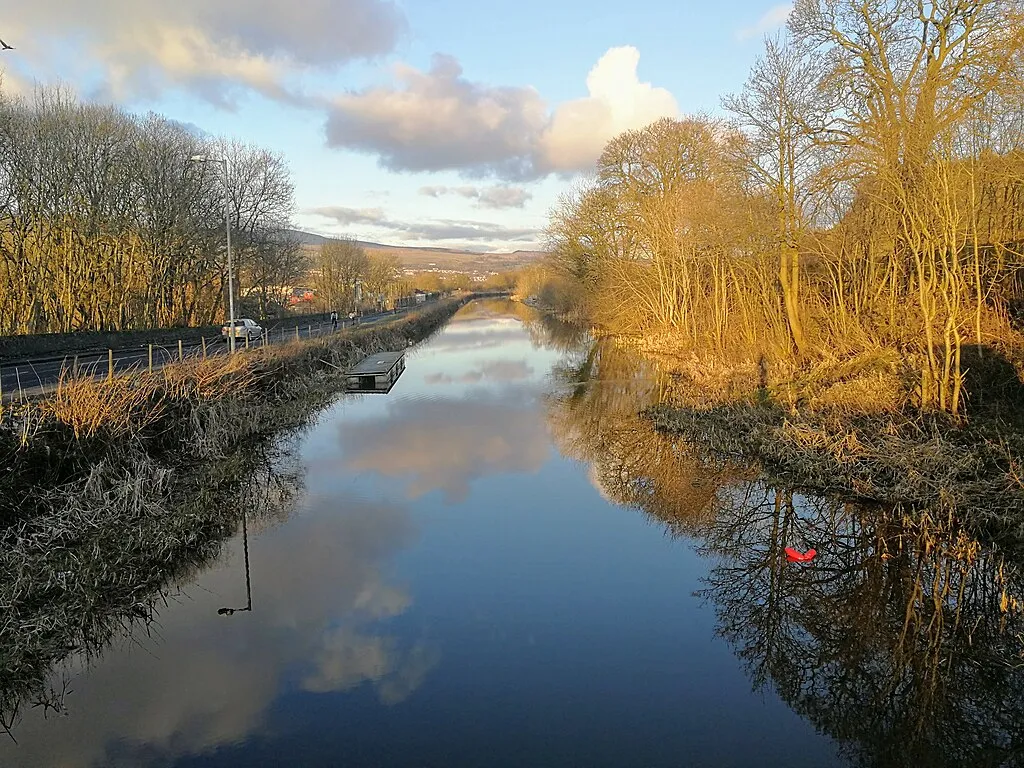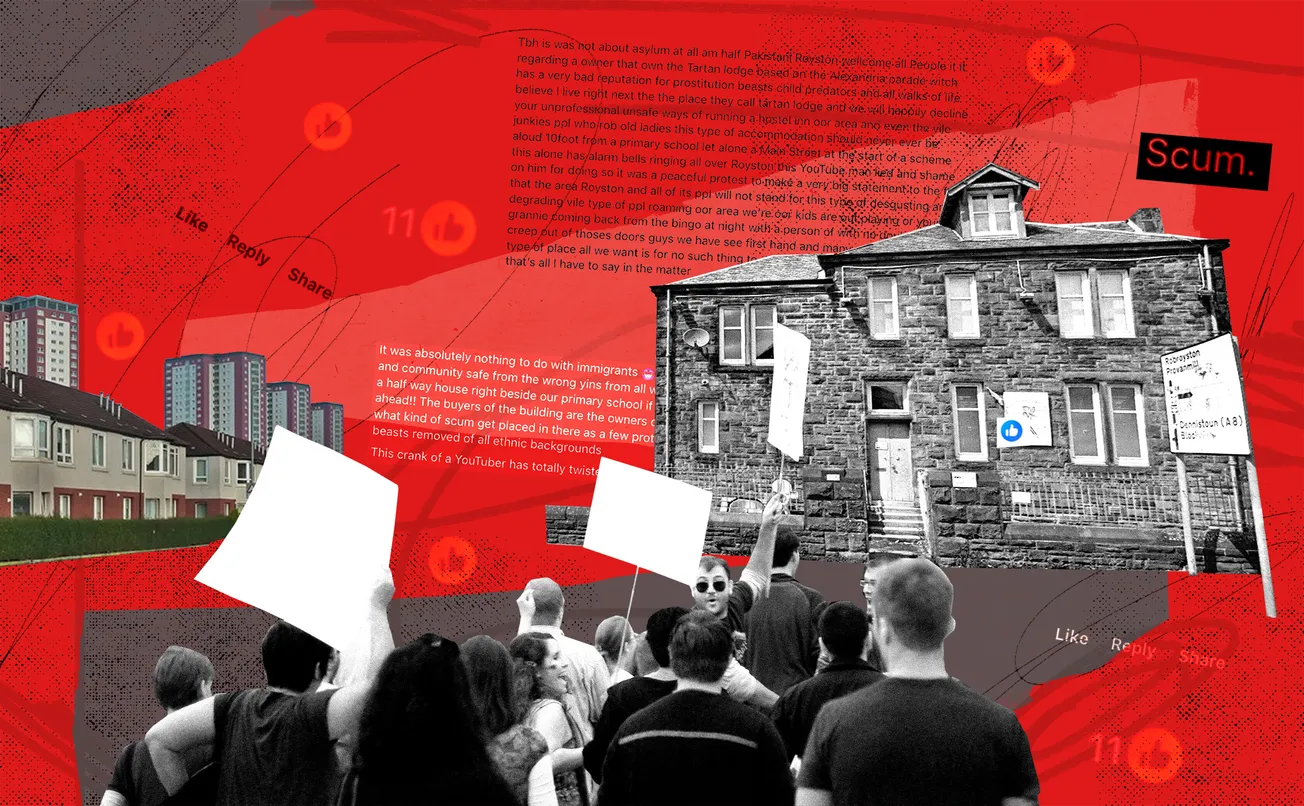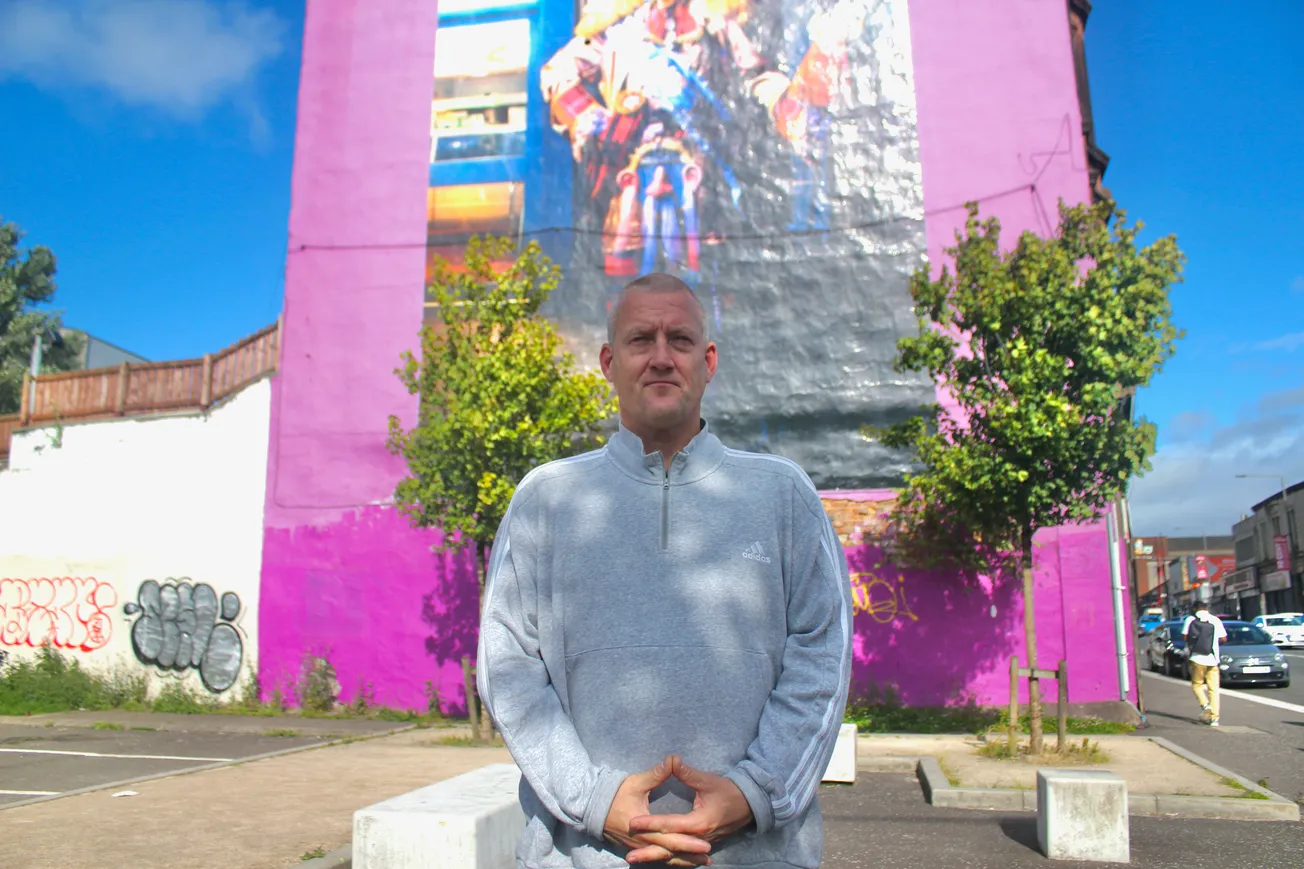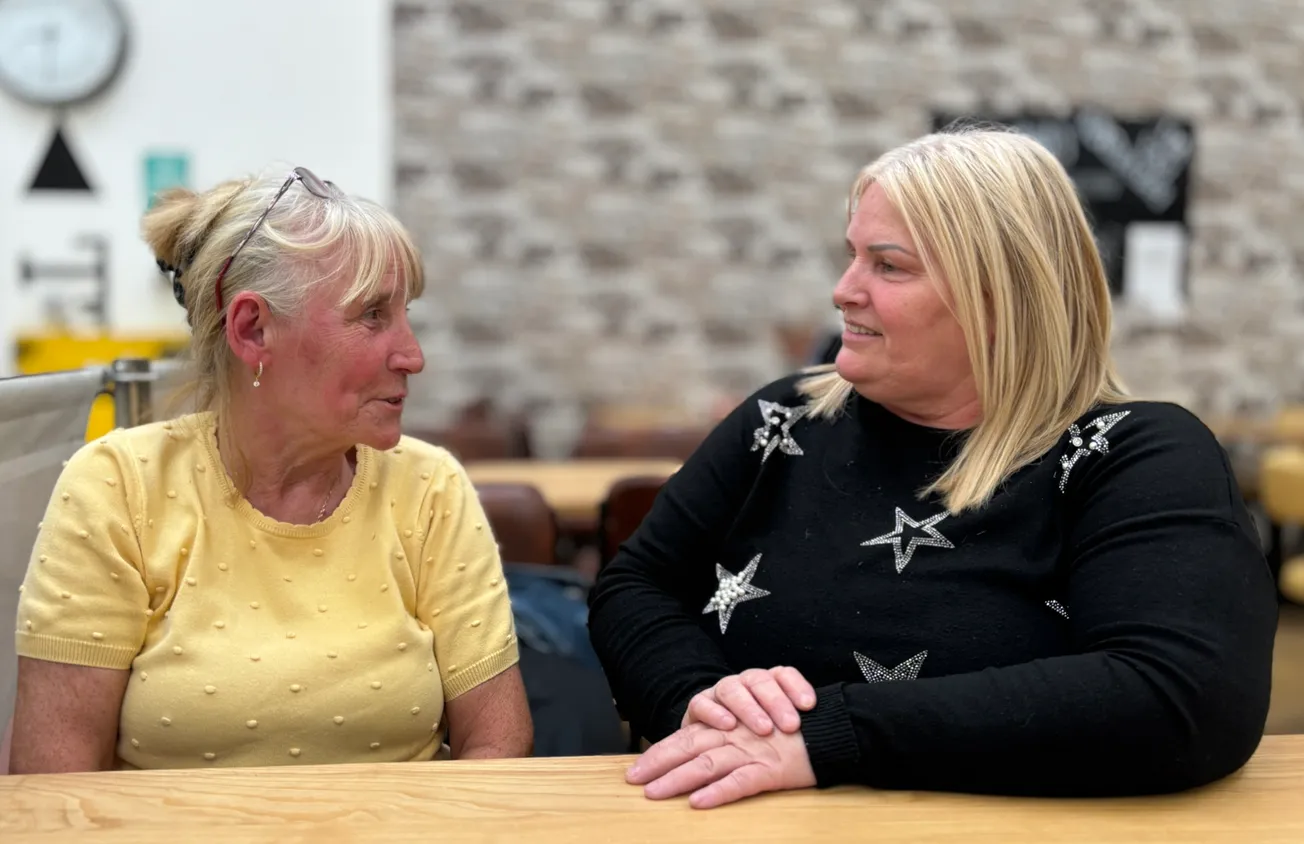The old man in the canal had thinning grey hair, bald on top. He floated along in dark trousers and a waistcoat knit, jacketless — and seemingly dead — on an October day in Glasgow, 1935.
Pulled out onto the Possil Marsh towpath, his bad luck was even clearer: right eye missing from its socket, no teeth, not breathing. Mouth-to-mouth stirred him a little, but at the Royal Infirmary his death was recorded without a name. Among his clothes, the only identifier was a locker key inscribed with the number 269 and the initials “J.G”.
Between its inauguration in 1768 and nationalisation in 1948, the Forth & Clyde canal was busy enough to be dangerous: it brought jobs, trade, barges, ships and later pleasure steam “puffers” right through Glasgow’s centre, collecting profits at the tolls for the private companies that built and owned the cut. All this came, however, with a dependable side soup of crime and corpses.
Deaths, theft and accident on the Forth & Clyde were staples in The Scotsman and Evening Times of old. Besides the body of poor J.G, there were plenty of others. These three-line tragedies appeared regularly: a teenage apprentice butcher, Albert Malone, missing from home, found injured and water logged by Firhill (‘Clyde Canal Mystery: Death Not Due to Drowning’ 1931); two unnamed men, slipped and drowned by Lambhill (‘Victims of the Fog’ 1932); Thomas Livingstone, who opened a lock for a steamer early on a February morning and was knocked by the moving arm into the water; a woman tried to save him with a boathook (‘Drowned in Canal: Lock-keeper in Accident at Maryhill’ 1935).
Pop culture cameos have often flashed a similar menace — in Alexander Trocchi’s dark novel Young Adam, for example, set on a canal coal barge, or fictionalised in Lynne Ramsay’s debut feature, Ratcatcher, where a young boy is drowned.
Lately, the canal’s fate has been more forgotten than dramatised. When the southern branch from the Forth and Clyde, the Monkland Canal, closed to navigation in 1952, it was eyed by the postwar urbanists to become a motorway — cars on the M8 to Easterhouse are in fact speeding over a filled-in waterway. The main canal closed soon after in 1963, too expensive to maintain, its locks severed. The twisting path to the basins at Port Dundas, meanwhile, curled up like kitchen plumbing in the heart of the city. No one particularly wanted to see it.
Communities that border the northeastern cut off the canal — the edges of Maryhill, Lambhill and Possilpark — sank into decline, with some of the worst deprivation markers in Scotland. The Millennium Link project poured £83.4m into restoring the canal, but still, in a 2007 survey conducted by Scottish Canals, half of Maryhill residents quizzed said they didn’t even know it existed.
But now, in a first for the UK and Europe, Glasgow is rebooting its canal story with a classically 21st-century plot device: a multimillion-dollar computer “brain” that gets cleverer day by day, which could help to turn around some of the neighbouring neglect, and, critics suggest, also seed shoots of gentrification.
It has quietly been “plugged in” without anyone much noticing for over a year, creating exactly what the canal has lacked since the tollbooth era — a new income stream. This so-called ‘smart canal’, which manages floodwater, could be revolutionary, just as the horse-drawn barges of coal dragged along the canals were to Glasgow at its industrial peak. Where the canal was first built for trade and safety, to dodge coastal skirmishes during the war with France, it now is bidding for a second act, as a “stealthy” urban regenerator.
Believe, achieve
“The concept is easy. The challenges have been significant,” says Richard Millar, chief operating officer of Scottish Canals. He has led the project as a ten-year partnership between Glasgow City Council, Scottish Water, Scottish Canals, American engineering firm AECOM and Autodesk software to finally reach the “on” switch for a full capacity test last year. (It had been launched prior to this, and helped manage Storm Babet floodwater in 2023.) Managed remotely, the smart canal uses a ‘digital twin’ fed with weather sensor data, updated hourly, to control its waterline and help manage the groundwater levels when Glasgow gets its famously heavy rainfalls.
“The smart canal takes the ability to drop the canal over a single piece of water 20 miles long by four inches,” says Millar. “The brain of the smart canal, a big computer, looks at the weather and tells the weirs to open up [into the river Kelvin catchment and out to sea] and hold the stormwater in the canal.”
This was not the only possible solution to the groundwater problem (“We could have built a tunnel through town,” Millar says wryly), and it came in at a cost of about £17m. But in the long view, it’s the neater and thriftiest connection to the past, repurposing 18th-century engineering with the help of modern tech. “Every time you get a rain event,” Millar adds, “it’s getting cleverer and cleverer.”
That’s just phase one: the real prize is to create 3,000 new homes over 110 acres of adjacent land, spread across four main plots. In one, the Dundashill development on the old Port Dundas distillery site, houses around a sunken garden will have sophisticated ‘suds’ ponds that will help to manage the flow of excess water, planted and landscaped with wooden decking that appear in CGI mock-ups as a cross between a Soho House swimming pool and a King Charles-style wetland dream. (Igloo, the BCorps developer involved with the site, has just won a contract to work on the Crown Estate’s new model Knutsford development.)
Critics have argued that not enough of the new canalside homes will be available for social rent, a fact which seems to summarily exclude the lower-income residents who already live nearby in the area. Human geographer Melissa García Lamarca and urban researcher/housing activist Neil Gray, in a 2020 paper for the Barcelona Laboratory for Urban Environmental Justice and Sustainability, wrote that “aside from 20% social housing provision in new developments (hardly an even ‘mix’), few measures exist to ensure low-income and people of colour will be meaningfully included—socially, economically and politically—in the regenerated green and sustainable canal area”.
Their argument suggested that “mixed communities” with different income levels were wrongly at the heart of Glasgow City Council’s regeneration philosophy. The net result, Lamarca and Gray wrote, would be that mixed communities “significantly reduces social housing provision for the most impoverished groups”. Townhouses for sale in the development are due to be finished this spring, with the three- and four-bed properties priced from £317,500 — 70% higher than the average Glasgow property price of £185,000.
No one disputes that Glasgow needs more and better housing, and Millar maintains that “we’re passionate in making sure this isn’t a gentrification of the canal”. The choice, as he describes it, was more fundamental — either a housebuilder can safely put foundations in the ground, or they can’t.
“North Glasgow had a lot of vacant sites that couldn’t be developed because of flooding — instead of building the tunnel, we could repurpose the canal. It’s a key part of those 3,000 new homes,” says Millar. A Sighthill development, already connected to the canal tech and with a new bridge to the city centre, will be joined by new homes at the old Ruchill Hospital, Cowlairs and a Hamiltonhill plot by Queens Cross Housing Association at the back of Possil — “all of that will be connected into that smart canal”.
The key point is also a hard-headed one: the smart canal can pay for itself, Millar says, because it will bring in revenue by charging residents through Scottish Water for their connection to the service. After being effectively wiped out by competition from railways and roads, the canal has found a way to be relevant again.
Glasgow's lifeblood?
The canal’s relationship to Glasgow tells a particularly “big story”, says Millar, even though it’s fair to say canals boosted Victorian city economies across Britain (and were intermittently hazardous everywhere).
The Forth & Clyde’s sea-to-sea stretch, 35 miles from Grangemouth to Bowling, was significant because it carried a lot of the raw materials Glasgow lore is made of: shipbuilders’ iron ore, barley, whisky, coal, seed and cloths, all building up the “second city” of empire. “There was rapid growth to the 1850s, then the railways arrive — and you see a decline,” Millar says. The “darkest days”, he says, came in the 1960s, when heavy industry had departed the Clyde, and the purpose of the canal had weakened as a result, “unloved and uncared for”. In 1963, it was closed altogether, and rot and rust set in.
A carbreaker on the Netherton Road used to simply “let off the handbrakes” of old cars beyond repair, says Millar, sending beaten-up Mini Coopers into the water. Once prosperous northern Glasgow, where flagship factories such as the Singer site at Kilbowie had made it a “powerhouse”, became a lost territory of derelict and vacant land. “North Glasgow had ceramics, ropeworks, chemical works, from Maryhill, Ruchill, through to Possil. There was a vibrancy — the canal in its day was the absolute artery of trade. People worked on and beside the canal.”
There is “a complete link”, Millar insists, between the health of the canal and the neighbouring communities. This suggestion is borne out in purely observational terms by a 2020 study he co-authored with Glasgow Caledonian University and others, that annual mortality rates decreased by 3% in urban areas within 500m of a canal that had undergone major regeneration since 2002.
The study did not go so far as to declare defined reasons for canal proximity promoting longer lives, however. The authors wrote: “the findings should be interpreted with caution as the confidence intervals were wide and a direct causal link between the regeneration of specific canal assets (e.g., locks, bridges and waterway assets) and health benefits has yet to be established”. In other words, the canal’s renaissance appears to be clearly beneficial, but it’s not clear exactly why – and it’s not the only change at play.
The determinants of wellbeing — and the reciprocal markers of deprivation — are not just limited to one factor, as a panel of experts emphasised to the Scottish government’s Health, Social Care and Sport Committee last autumn. It takes fair work, social security, good housing and healthcare, the panellist said, to create a framework in which people can thrive. And as unglamorous as issues with groundwater sound, tackling them has potentially unlocked a way to begin to connect at least some of these determinants back together.
Comments
How to comment:
If you are already a member,
click here to sign in
and leave a comment.
If you aren't a member,
sign up here
to be able to leave a comment.
To add your photo, click here to create a profile on Gravatar.






